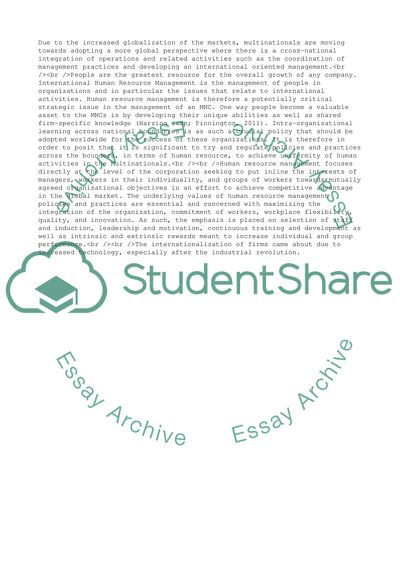Cite this document
(Human Resource Policies and Practices in Multinational Corporations Coursework Example | Topics and Well Written Essays - 1750 words, n.d.)
Human Resource Policies and Practices in Multinational Corporations Coursework Example | Topics and Well Written Essays - 1750 words. https://studentshare.org/management/1850426-to-what-extent-is-it-reasonable-for-multinational-enterprises-to-expect-to-regulate-their-human-resource-policies-and-practices-uniformly-across-national-boundaries-discuss-using-examples
Human Resource Policies and Practices in Multinational Corporations Coursework Example | Topics and Well Written Essays - 1750 words. https://studentshare.org/management/1850426-to-what-extent-is-it-reasonable-for-multinational-enterprises-to-expect-to-regulate-their-human-resource-policies-and-practices-uniformly-across-national-boundaries-discuss-using-examples
(Human Resource Policies and Practices in Multinational Corporations Coursework Example | Topics and Well Written Essays - 1750 Words)
Human Resource Policies and Practices in Multinational Corporations Coursework Example | Topics and Well Written Essays - 1750 Words. https://studentshare.org/management/1850426-to-what-extent-is-it-reasonable-for-multinational-enterprises-to-expect-to-regulate-their-human-resource-policies-and-practices-uniformly-across-national-boundaries-discuss-using-examples.
Human Resource Policies and Practices in Multinational Corporations Coursework Example | Topics and Well Written Essays - 1750 Words. https://studentshare.org/management/1850426-to-what-extent-is-it-reasonable-for-multinational-enterprises-to-expect-to-regulate-their-human-resource-policies-and-practices-uniformly-across-national-boundaries-discuss-using-examples.
“Human Resource Policies and Practices in Multinational Corporations Coursework Example | Topics and Well Written Essays - 1750 Words”. https://studentshare.org/management/1850426-to-what-extent-is-it-reasonable-for-multinational-enterprises-to-expect-to-regulate-their-human-resource-policies-and-practices-uniformly-across-national-boundaries-discuss-using-examples.


